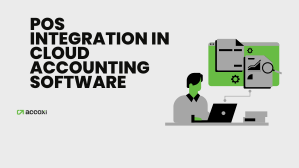

December 05, 2019

Indian Tax System in India is ages old and has undergone several modifications on a timely basis and has molded into the form it is in today! The Tax System in India is one of the most incomes generating section for the government body and under this system; every person who earns an income is taxable. Only, the taxable amount varies depending on the income and source of income of each person.
In this article, various features of Indian Income Tax are addressed for the readers:
Tax is imposed on individuals or organizational entities and this imposition of tax is based on income or taxable income (profit) of these parties. Each category of taxpayer has corresponding tax imposition scheme too.
Tax rate is directly proportional to the income generated i.e. when the taxable income increases, so does the tax rate. However, taxable amount of each person or entity depends on the tax spectrum under which they belong.
Income Tax remitted to the government is solely used for funding public services and amenities fulfill government commitments, provide things for the public and everything that contribute to the splendor of both nation and its people.
The Income Tax Act comes under Section 1, Income Tax Act, 1961-2019 (No. 2). As per the Income Tax Department, the Income Tax Act, 1961 (43 of 1961) (as amended by act no. 23 of 2019) is defined as:
|
“An act to consolidate and amend the law relating to income-tax and super-tax.” |
The Income Tax Act passed in 1961 is the Legislative Act under which the administration and governance of the country’s income tax system and laws are applied and enforced. Every represented or amended Income Tax rule strictly works in conjuncture with the Income Tax Act. The Income Tax rules can never overpower the Income Tax Act.
The liability of remitting the Income Tax applies to the following parties:
If we consider the income on which tax is imposed, the following are the main criteria:
Income Tax department has made it easy for the taxpayers to make online remittance of Income Tax. The user should have net banking facility with a registered bank. The user will be asked to submit the Permanent Account Number (PAN) and Tax Deduction & Collection Number (TAN) for validation.
Paying direct taxes through an e-payment facility includes the following steps:
The process of E-filing ITR involves the following steps:
(OR)
If the return is not uploaded with DSC, the ITR-V should be printed, signed and submitted to the CPC within 120 days of date of E-filing. Only once the user submits the signed ITR-V, will the return be processed. The user has to regularly check the reminder mails and messages for about the non-receipt of ITR-V
|
Taxable Income |
Tax Rate |
|
Up to RS.2,50,000 |
Nil |
|
RS.2,50,000 to RS.5,00,000 |
5% |
|
RS.5,00,000 to RS.10,00,000 |
20% |
|
Above RS.10,00,000 |
30% |
|
Taxable Income |
Tax Rate |
|
Up to RS.3,00,000 |
Nil |
|
RS.3,00,000 to RS.5,00,000 |
5% |
|
RS.5,00,000 to RS.10,00,000 |
20% |
|
Above RS.10,00,000 |
30% |
|
Taxable Income |
Tax Rate |
|
Up to RS.5,00,000 |
Nil |
|
RS.5,00,000 to RS.10,00,000 |
20% |
|
Above RS.10,00,000 |
30% |
A partnership firm including LLPs is taxable at 30%. The amount of income tax will increase by a surcharge at the rate of 12% for income exceeding RS.1Cr. The amount of income tax and applicable surcharge shall further increase by Health & Education Cess calculated at the rate of 4% of such income tax and surcharge.
Local Authority is taxable at 30%. The amount of income tax will increase by a surcharge at the rate of 12% for income exceeding RS.1Cr. The amount of income tax and applicable surcharge shall further increase by Health & Education Cess calculated at the rate of 4% of such income tax and surcharge.
Domestic Company
|
Domestic Company |
AY 2019-20 |
|
Where its total turnover or gross receipt during the previous year 2016-17 does not exceed Rs.250Cr |
25% |
|
Where its total turnover or gross receipt during the previous year 2017-18 does not exceed Rs.400Cr |
NA |
|
Where it opted for Section 115BA |
25% |
|
Where it opted for Section 115BAA |
NA |
|
Where it opted for Section 115BAB |
NA |
|
Any other domestic company |
30% |
Additionally, the amount of income tax shall be subjected to Surcharge and Health & Education Cess.
|
Nature of Income |
Tax Rate |
|
Royalty received from Government or an Indian concern in pursuance of an agreement made with the Indian concern after March 31, 1961, but before April 1, 1976, or fees for rendering technical services in pursuance of an agreement made after February 29, 1964 but before April 1, 1976 and where such agreement has, in either case, been approved by the Central Government |
50% |
|
Any other income |
- |
Additionally, the amount of income tax shall be subjected to Surcharge and Health & Education Cess.
|
Taxable Income |
Tax Rate |
|
Up to RS.10,000 |
10% |
|
RS.10,000 to RS.20,000 |
20% |
|
Above RS.20,000 |
30% |
Additionally, the amount of income tax shall be subjected to Surcharge and Health & Education Cess.
Calculating Income Tax depends on a number of factors as mentioned below:
For a variety of taxpayers, there are tax exemptions and tax deductions based on the nature of their income. The calculation of Income Tax varies for salaried person and unsalaried persons. The main steps involved for a salaried person to calculate the Income Tax are:
Income Tax rule is one legislative rule that applies to a large proportion of the Indian population. Anyone with an income is liable to pay the government a tax. This tax paid to the government is employed for the benefit of the citizens in the form of amenities and other planning. Income Tax is one of the strong pillars of the Indian legislature.
Read More


